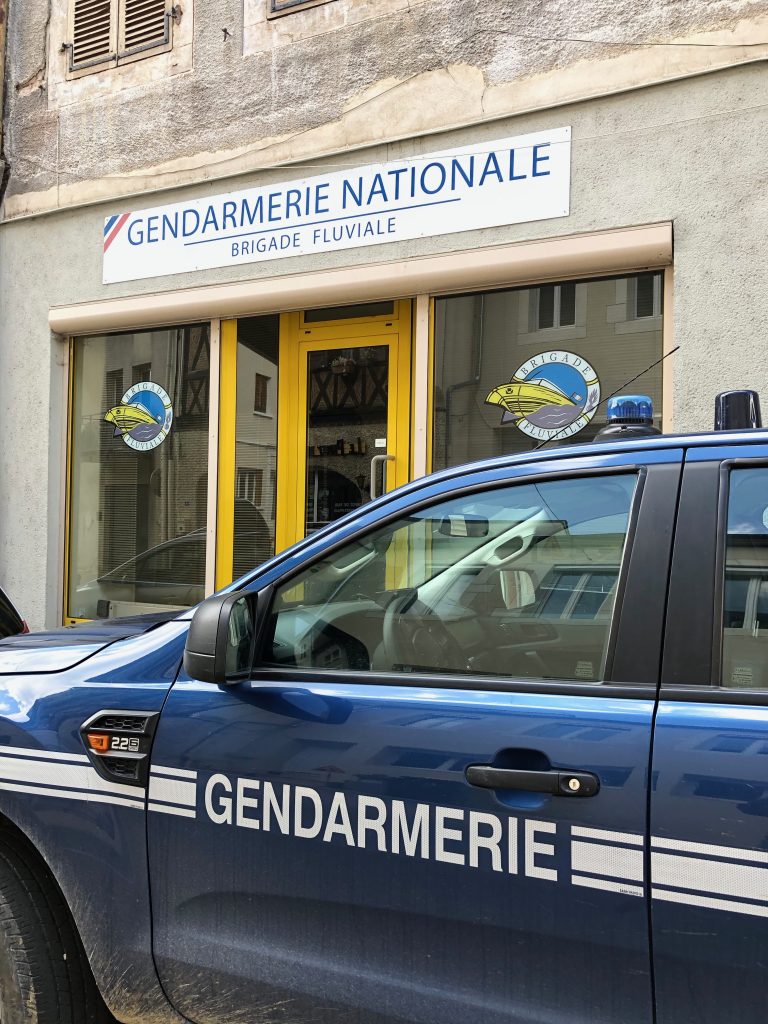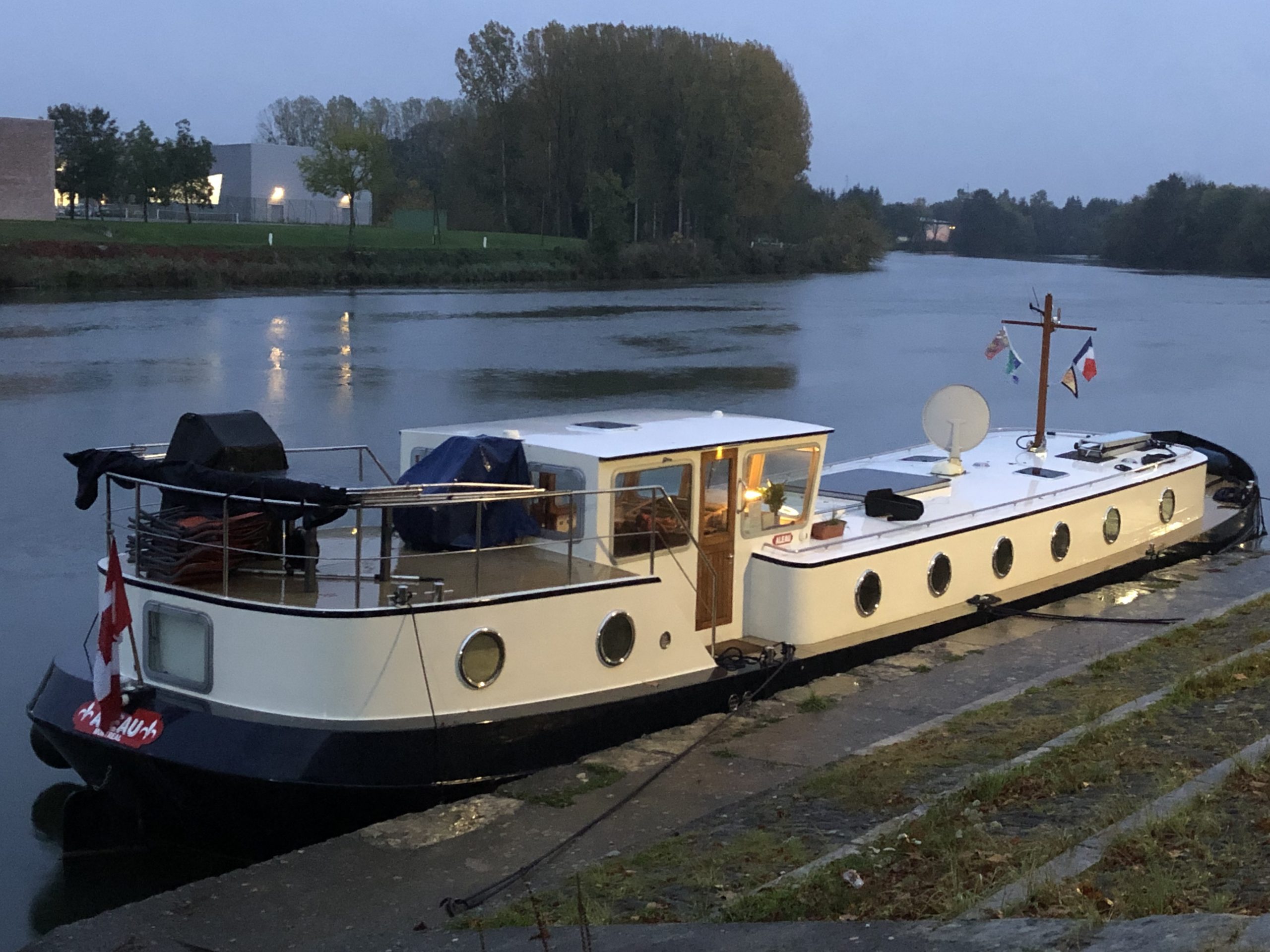By now, you may be wondering if Jeannie and I simply jumped on Aleau and started cruising. With 44 tonnes of steel – not to mention the law – that is not something we would want to do.
To operate a barge, two licenses are required. (The barge requires two similar licenses, as well.)
First, the person operating the barge needs a license. By the way, the person at the wheel is often referred to as “the helm.” I have an International Certificate of Competency or ICC. (I also have a Helmsman’s Certificate. Issued in the UK, it is not recognized in Europe but I got one to add to my list of qualifications when applying for insurance.)
Two things are required to get an ICC – training on the water by an approved school – and passing an exam on CEVNI. (More on that further down.)
I went to an excellent school on the Canal du Midi. Bargecraft is run by a retired UK police officer, Steve Bridges. https://www.bargecraft.com/
Training takes place on “Somewhere,” a 21-metre-long barge and the full-time home of Steve and his wife, Jo – along with their two dogs. Remember, owning at least one dog appears to be mandatory.
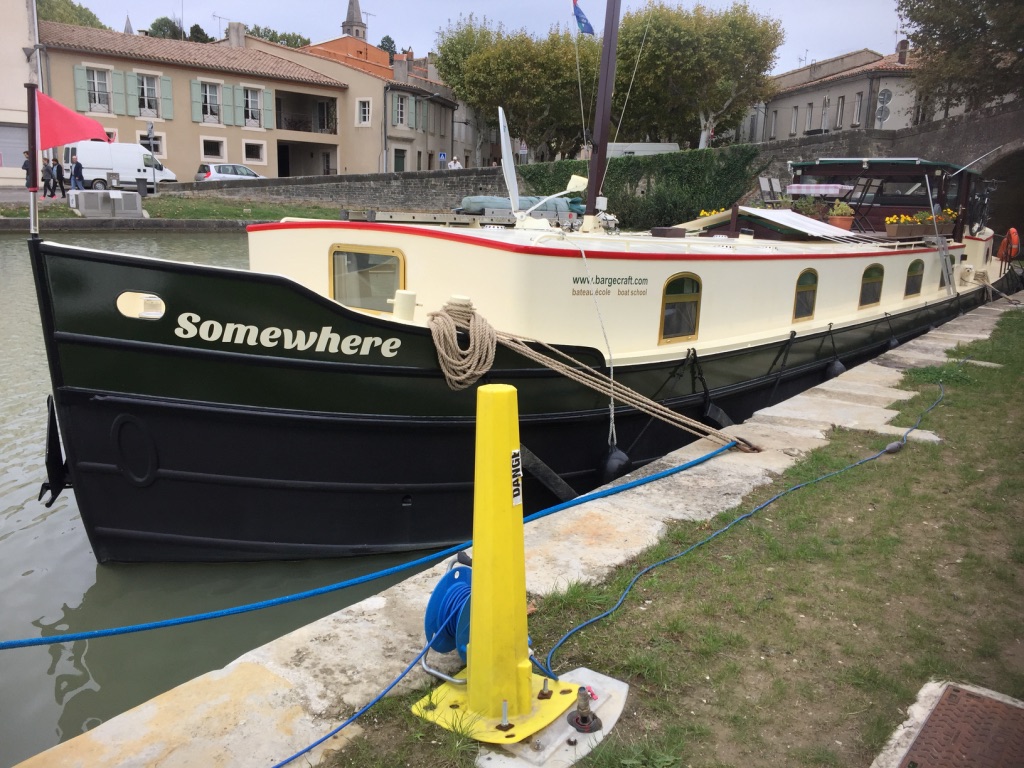
Like Aleau, Somewhere has two cabins. Steve and Jo live in one – and their student in the other. All meals are eaten onboard.
There is probably not a prettier classroom anywhere in the world than the Canal du Midi.
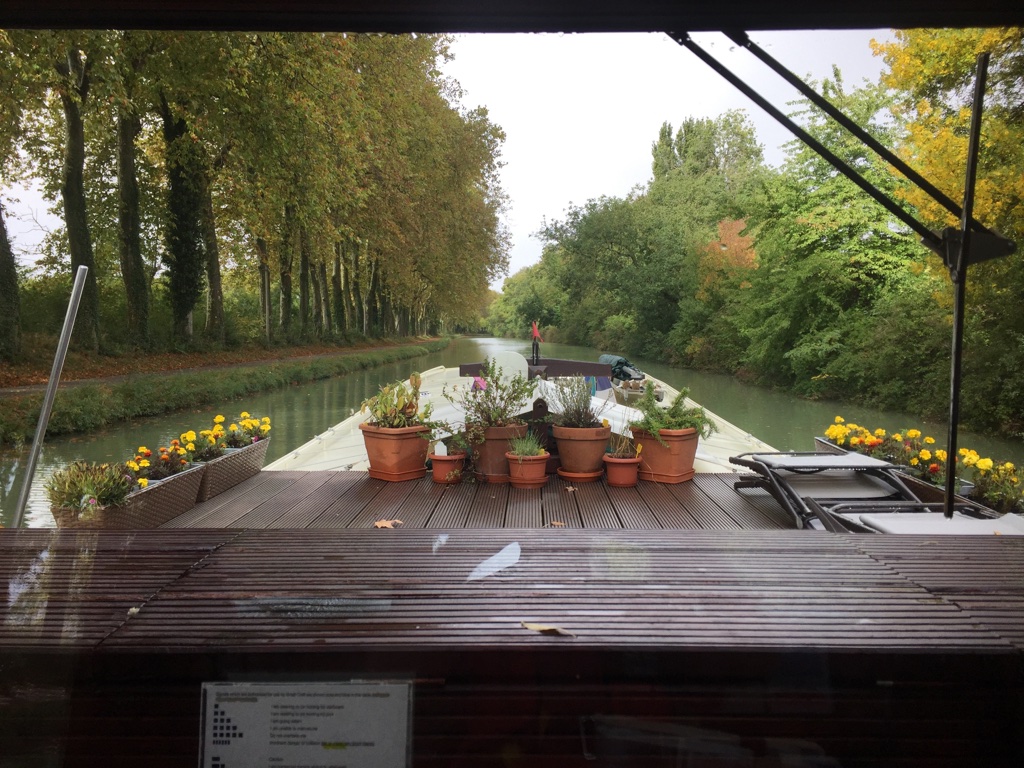
As with the Canal de Bourgogne, the locks close from noon to one o’clock. There can’t be a nicer place to tie up while waiting.
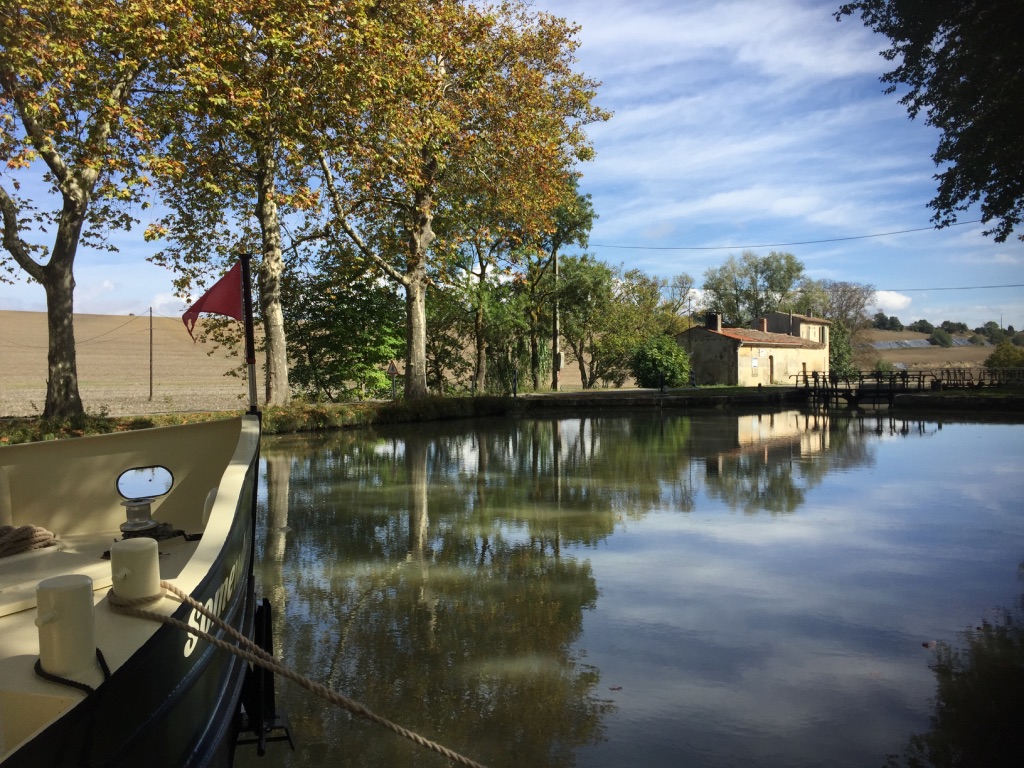
Schooling begins with a bit of “classroom” instruction – such as where to place ropes when in a lock.
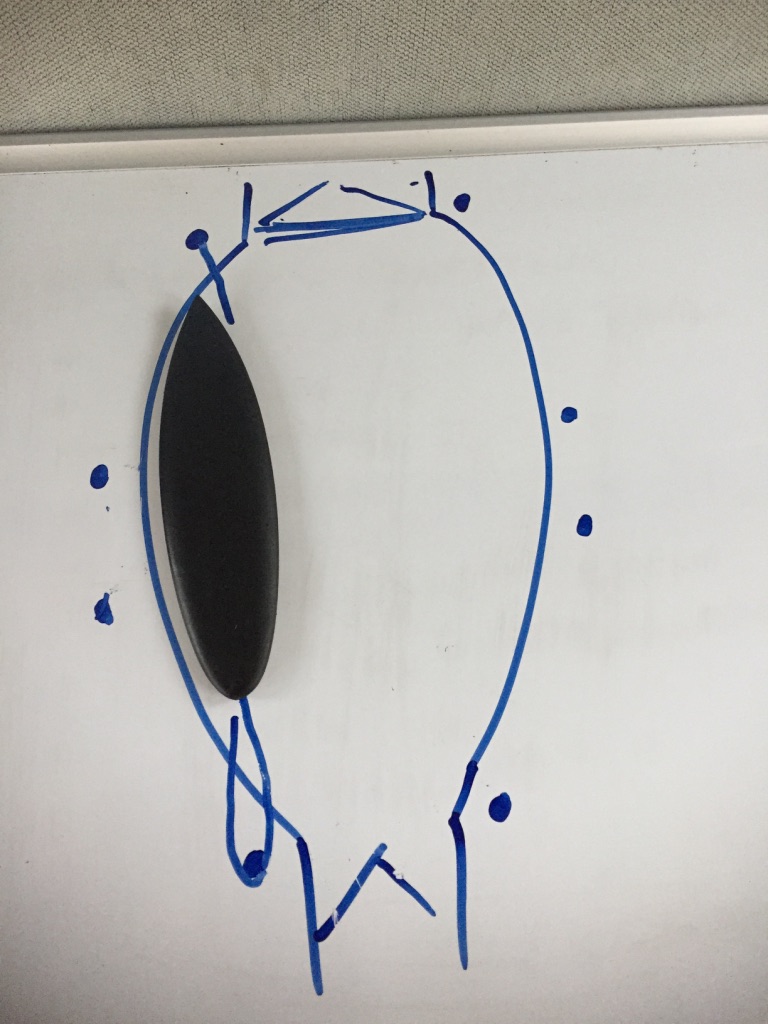
But most of the time, training is on the water – passing through 20-plus locks. Here, I’m at the helm as Steve takes charge of the rope at the bow.
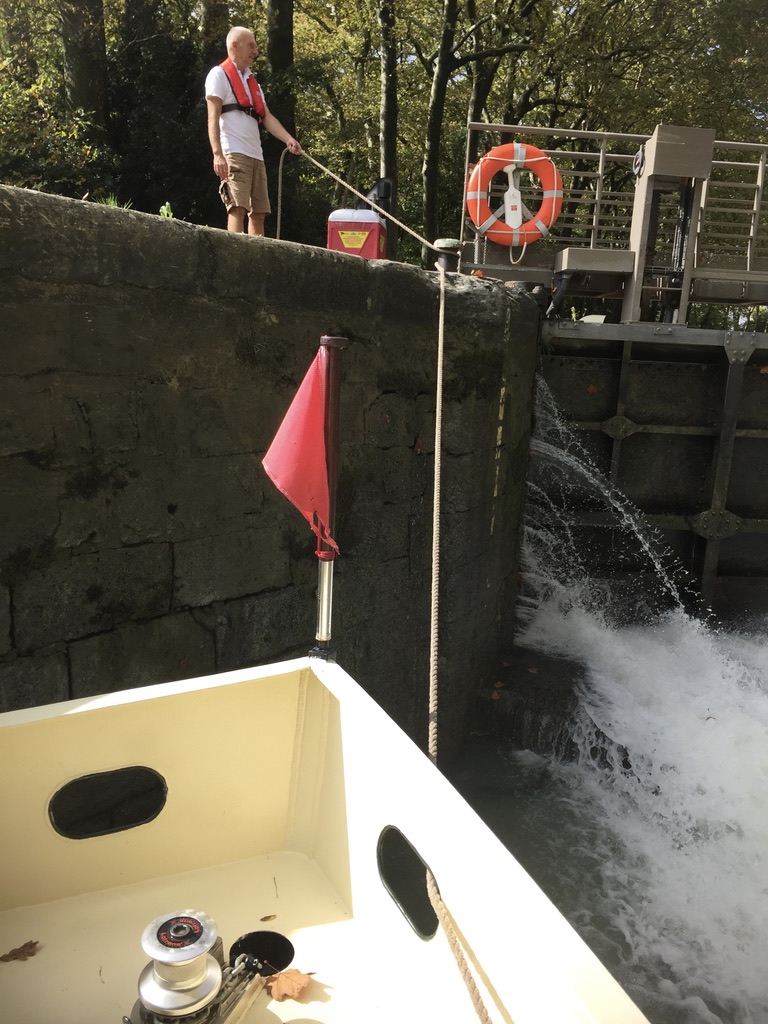
Learning how to moor “wild” is an important lesson. Ropes must never be tied to a tree nor cross the towpath. Stakes must be anchored firmly so the wash from a passing barge doesn’t pull them out.

In addition to showing competency at the helm, I must pass the CEVNI exam. Boating on the inland waterways of Europe is different from boating anywhere else in the world – so many of the rules, signs – even the radios – are unique to Europe. Because so many countries are involved – and because the rules, signs, etc. must be the same, it is the United Nations that administers what is referred to as CEVNI.
To study for the exam, I made more than 300 index cards with the signs and lights I might see on the waterways of Europe – and needed to know to get my ICC license.
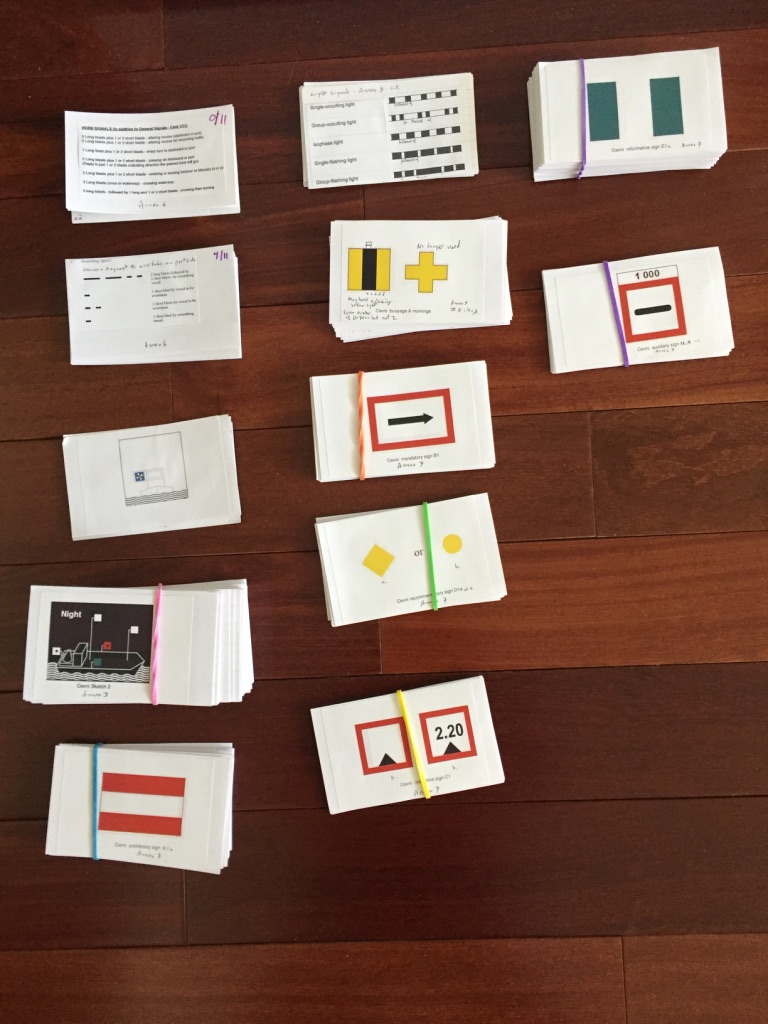
If you’re curious as to what they all mean, here’s a link to the CEVNI site. https://wiki.unece.org/pages/viewpage.action?pageId=25265142
In addition to having a license to operate Aleau, the ICC, I must also have a license to operate the radio. It, too, requires taking a course and passing an exam. The frustrating thing is the course and exam are designed for people who wish to operate a vessel anywhere in the world except Europe. Everything is different – even the radios are different. (If you’re curious, you can Google “DSC radios” – used everywhere in the world except Europe. In fact, they are illegal in Europe. And then, “ATIS VHF radios.” Used only in Europe. Of course, when we bought Aleau, she had a DSC radio so that had to be changed.) I had to memorize a lot of information, write the exam, and then forget everything I learned. Not only is the channel used for a Mayday call different – even how you make a Mayday call is different. But nowhere in the course for the VHF license is it mentioned that there is a different system in Europe! There, I’ve finished my rant.
In addition to me being required to have two licenses, the same applies to Aleau. She must be registered. And she must have a “Ships Radio License.” And, of course, like a car, we must have proof of insurance.
Police do stop barges and check for paperwork – along with life jackets and fire extinguishers. In France, it’s the Gendarmerie.
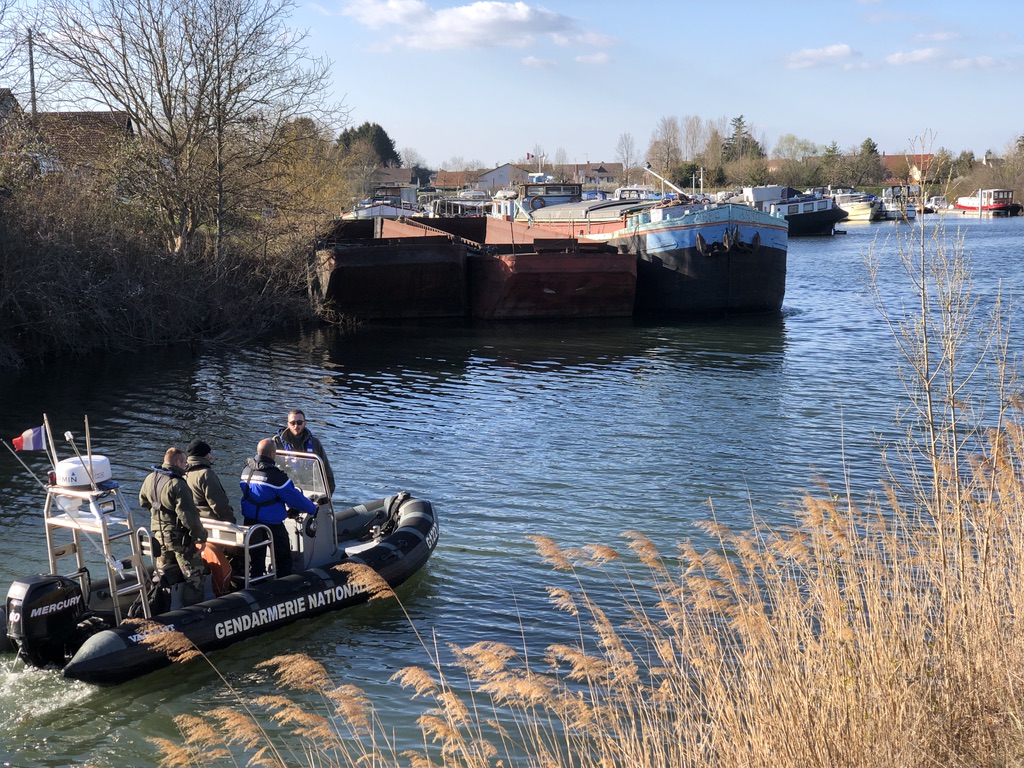
They even have their own office on land in St. Jean-de-Losne.
